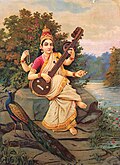External links
| Concepts | ||
|---|---|---|
| Instruments | ||
| Genres | ||
| Semi-classical genres | ||
| Thaats | ||
Ragas as per performance time | |
|---|---|
| Morning | |
| Afternoon | |
| Evening | |
| Night | |
| Anytime | |
| Season | |
Ragas in the Guru Granth Sahib | |
|---|---|
| | This article about the music of India is a stub. You can help Wikipedia by expanding it. |
| | This Sikhism-related article is a stub. You can help Wikipedia by expanding it. |
